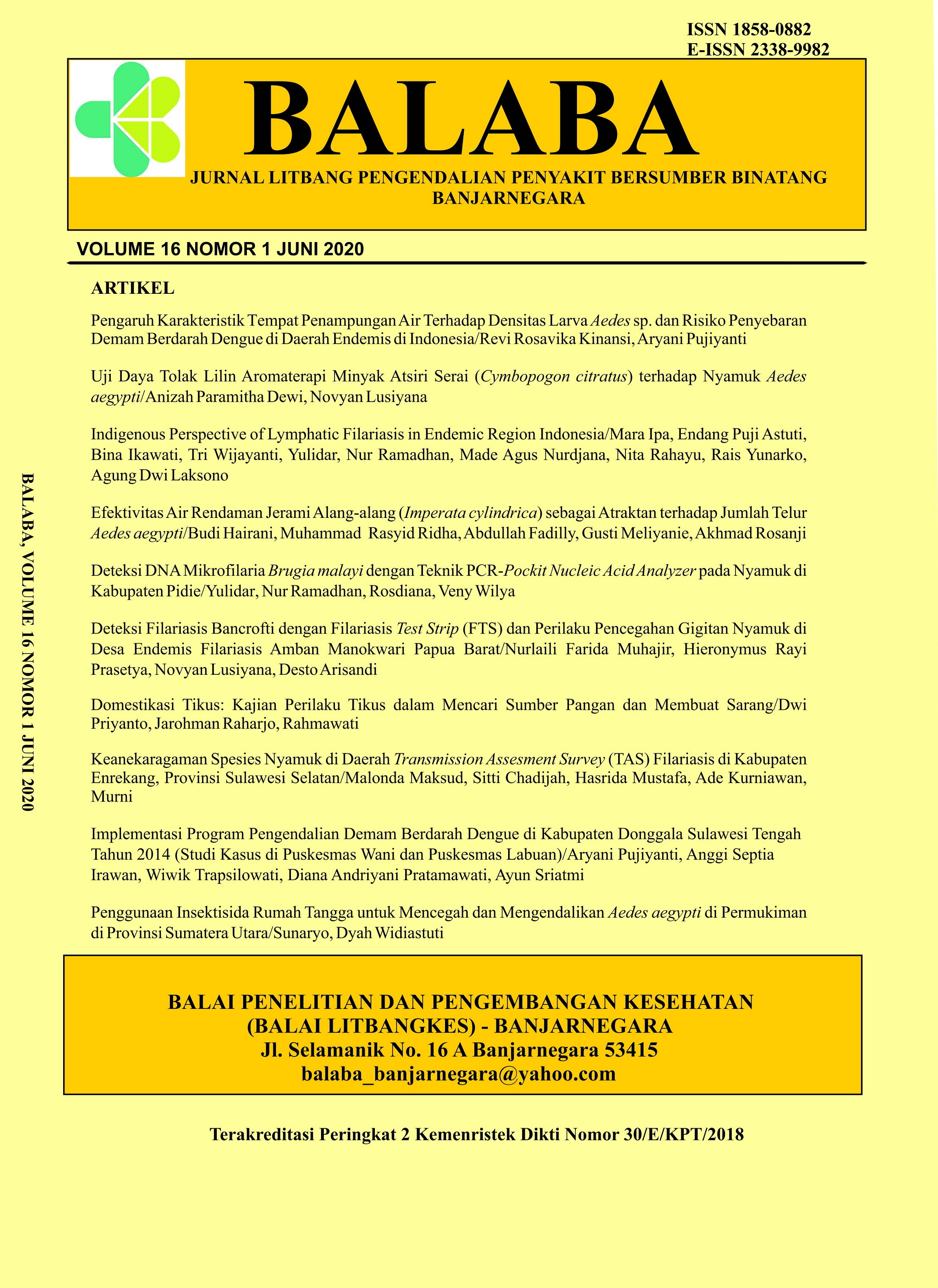Rat Domestication: Study on Foraging and Nesting Behavior
Keywords:
domestication, rats, foraging, nestingAbstract
Based on the proximity of their habitat to the settlement, rats were classified as domestic, peridomestic, and sylvatic. Domestic rats are the most potent to transmit zoonotic diseases. Several studies report overlapping habitat on certain species as of transmission possibility between species in turn increase the number of reservoir species. This article purposes to criticize species domestication potency related to foraging and nesting behavior. The primary data were obtained from the rat survey result that was conducted in Banjarnegara district in 2017. The data were descriptively analyzed with the examination of the possibility of domestication phenomena on R. exulans, R. tiomanicus, and R. norvegicus species. The conclusion from this study is the rat domestication potency was relatively low on R. exulans and R. tiomanicus. Both species were good adapting with food resourced from human's food, however nesting behavior has become barriers to domestication. Rattus norvegicus has been long adapted to food resource and human environment by nesting in settlement so that this species classified as a domestic rat.


